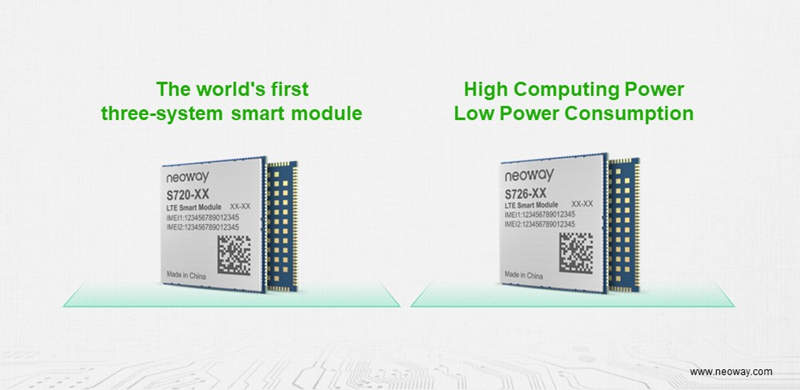market@neoway.com
 Pre-sales Consulting
Pre-sales Consulting Technical Support
Technical SupportWith the help of policies and new technologies, such as "new infrastructure", "digital economy", and "artificial intelligence", financial payment, Telematics, distance education, and other industries have entered the fast lane of network connectivity and intelligence. Smart modules also have a new opportunity for rapid development.
According to ABI Research data, by 2024, the total shipments of smart modules are expected to exceed 32 million pieces, corresponding to a market size of about 720 million US dollars. Among them, the application of high-end smart modules is increasing rapidly; the compound annual growth rate of shipments from 2020 to 2024 can reach 150%, the shipments are expected to exceed 8 million pieces, and the market size will exceed 400 million US dollars.
With the rapid growth of smart module shipments and broad market prospects, more and more industries are no longer satisfied with basic connectivity functions, but are turning to higher-level intelligent requirements. For example, multimedia video interaction, implantation of various apps, access to different display devices, facial recognition, and facial payment put higher requirements on the computing power of modules. Support for GNSS, Wi-Fi, BT/BLE, LCM, camera, sensor, NFC, fingerprint recognition, and other external expansion devices raises more functional interface requirements for modules.
To sum up, smart modules are developing and evolving towards high performance, high integration, and full function with cellular communications as the core. They improve computing power and performance in multiple dimensions, and meet the requirements of comprehensive applications of video codec, AI, and other fields. Rich interfaces and open development concepts provide the IoT market with a more integrated and simplified AIoT communications solution based on wireless communications modules.

Neoway has insight into the needs of the industry and recently launched the smart modules S720 and S726. They serve different vertical industries, help customers to choose flexibly, simplify application development, and reduce costs based on different capability levels of the modules.
S720 can meet the diversified application needs of different developers and supporting ecosystems, and create and upgrade more traditional applications, based on the support of the three systems and market development. Smart education and financial payment are the typical application scenarios of the S720.
In the Telematics field, to meet the increasing user experience requirements and functional diversification requirements of in-vehicle multimedia, the smart module S726 can help quickly develop in-vehicle multimedia application terminals, quickly implant mainstream apps, and enrich applications; S726's 8-core high computing power provides basic support for ADAS and DSM fatigue driving detection algorithms, and enhances the comprehensive competitiveness of products.
In addition to the preceding typical applications, the smart modules S720 and S726 can also be used in cash registers, facial recognition terminals, industrial PADs, commercial display advertising machines, medical equipment, smart robots, smart handheld devices, driving recorders, and ETC handheld terminals to help the smart upgrades of medical, transportation, industry, education, finance, Telematics, and other industries.
The product managers of Neoway's smart modules said that in Neoway's smart module family, there are nearly 10 smart series modules, covering from entry-level to flagship level. They provide solutions with different performance, computing power, and costs for customers in vertical industries, such as smart energy, commercial retail, smart home, smart education, Telematics, smart security, and smart industry. In the 5G era, Neoway will continue to develop flagship products and build a more complete Neoway smart module family to provide technical support for higher industry needs.